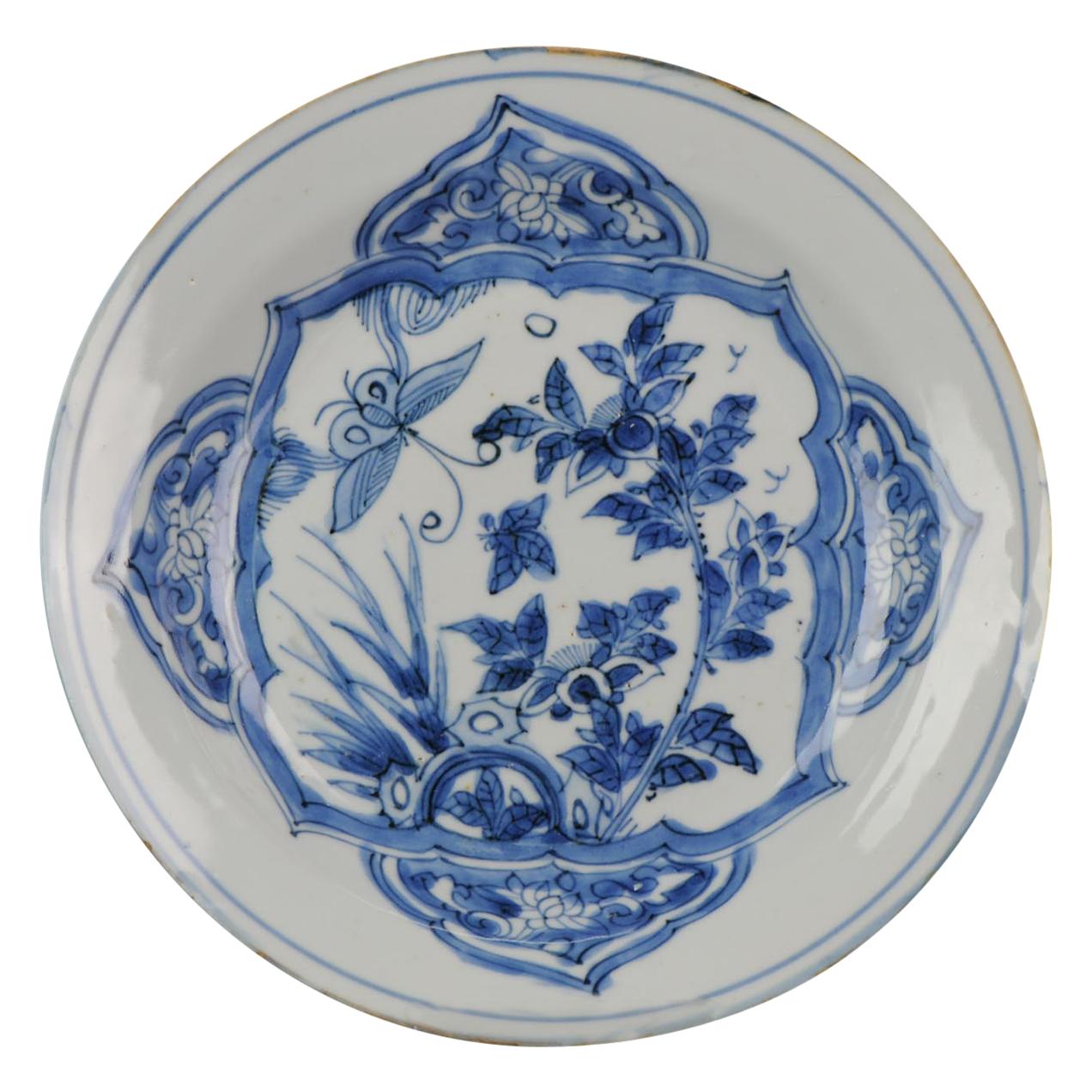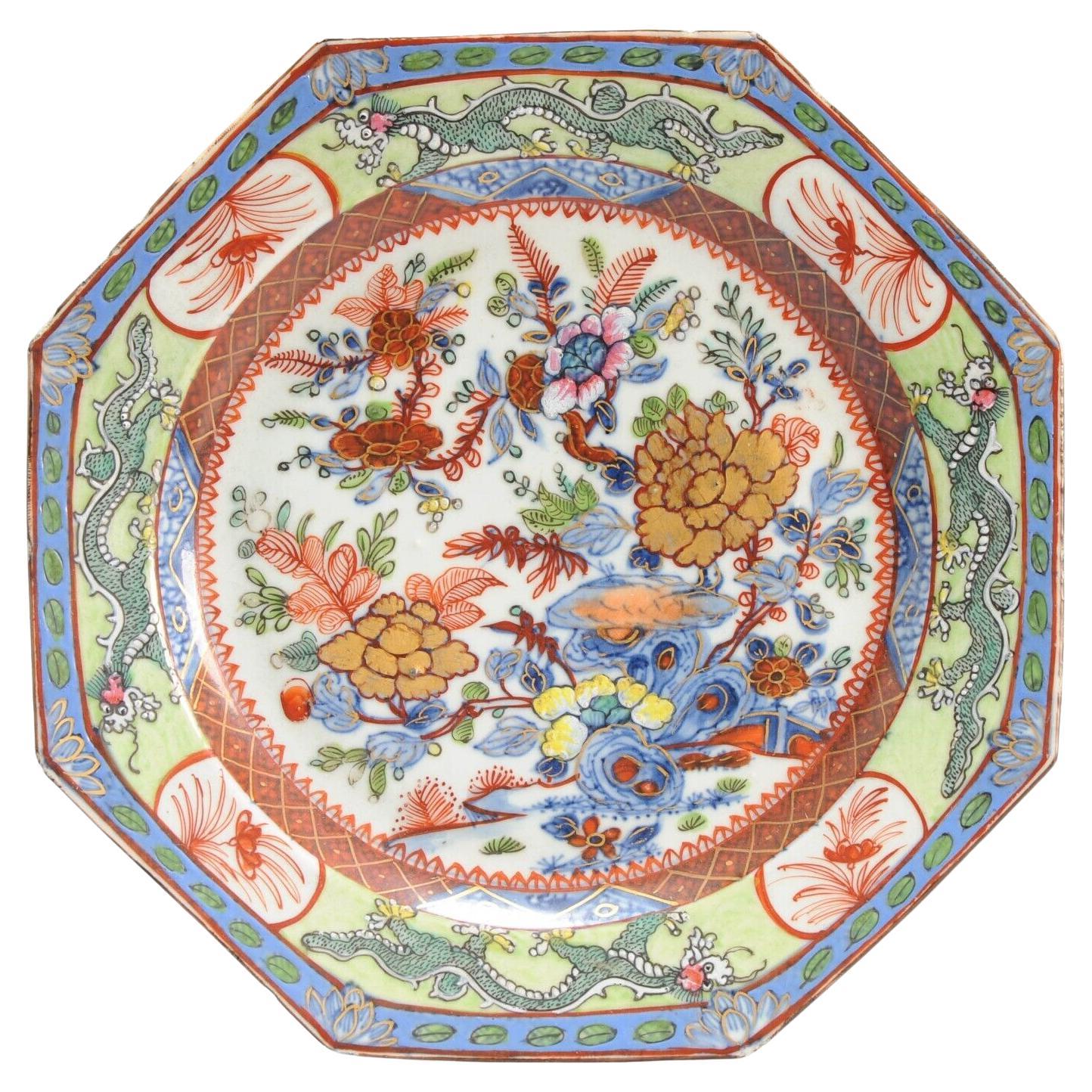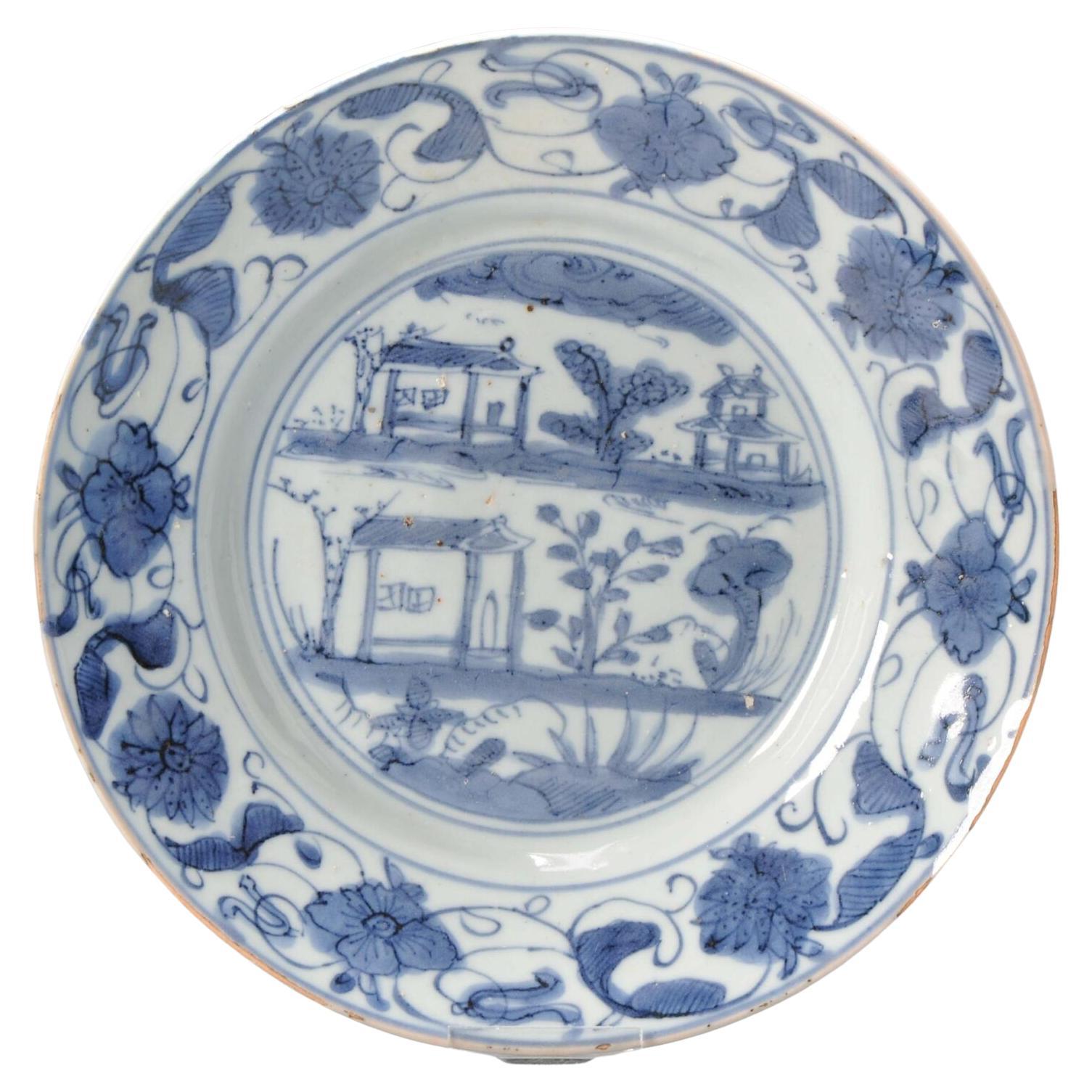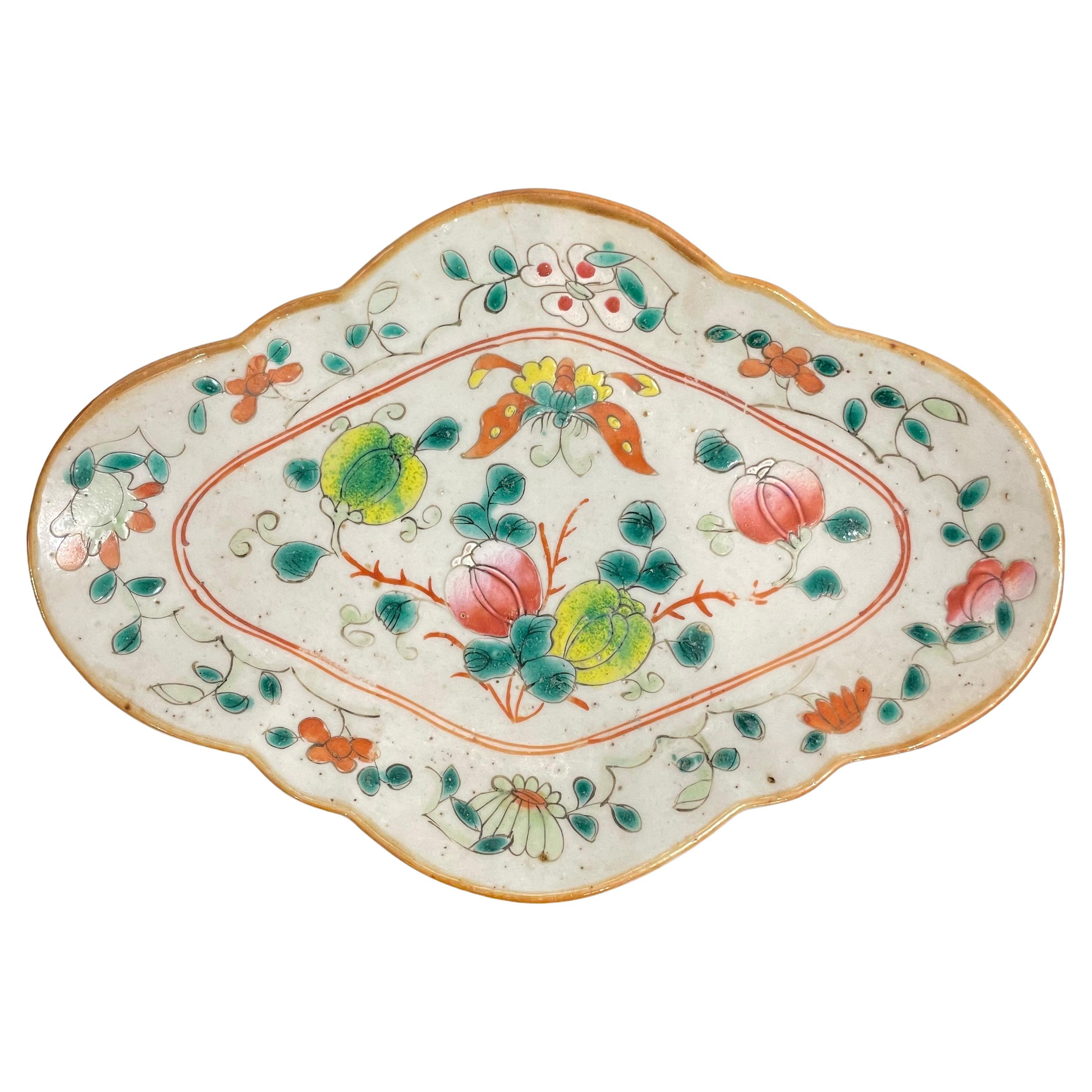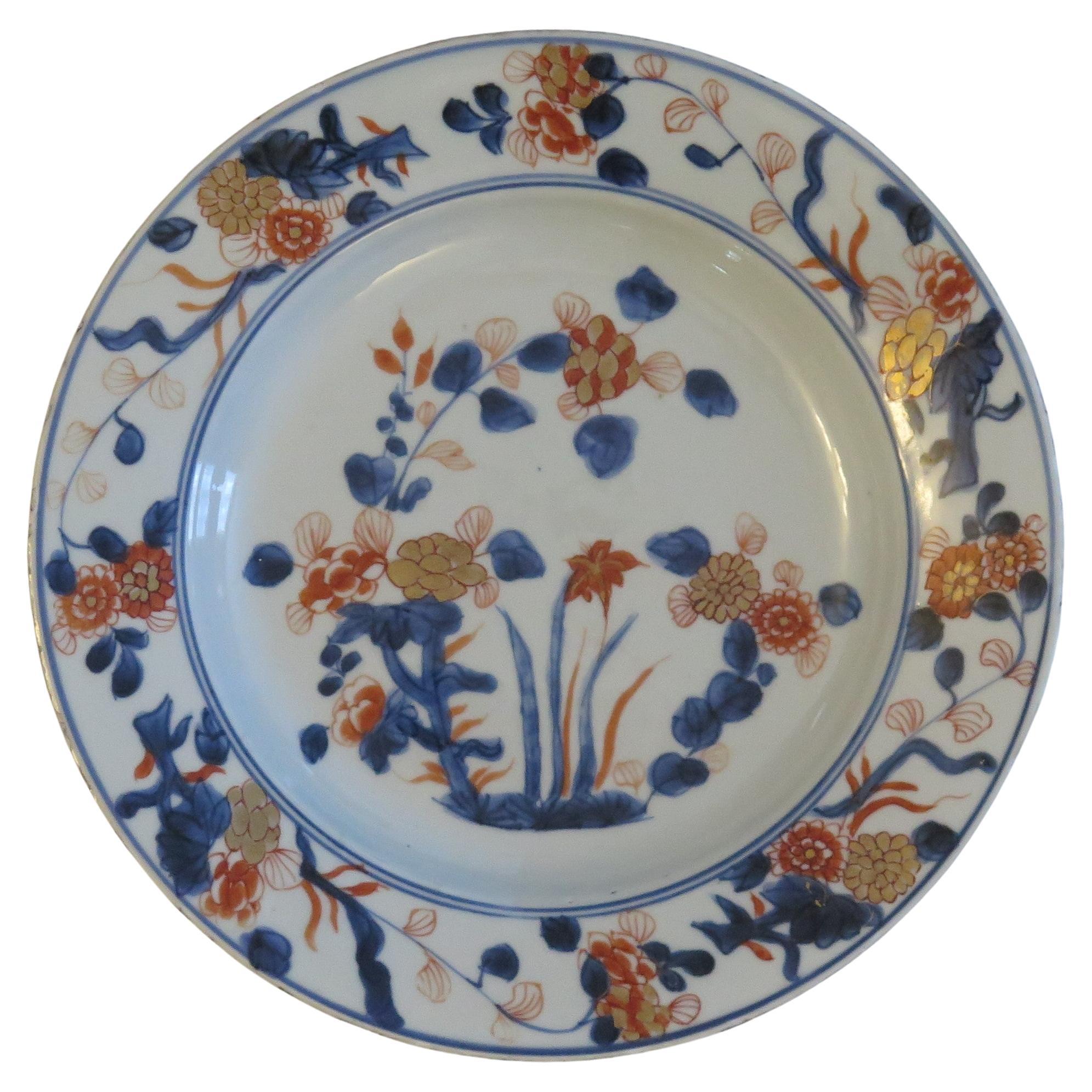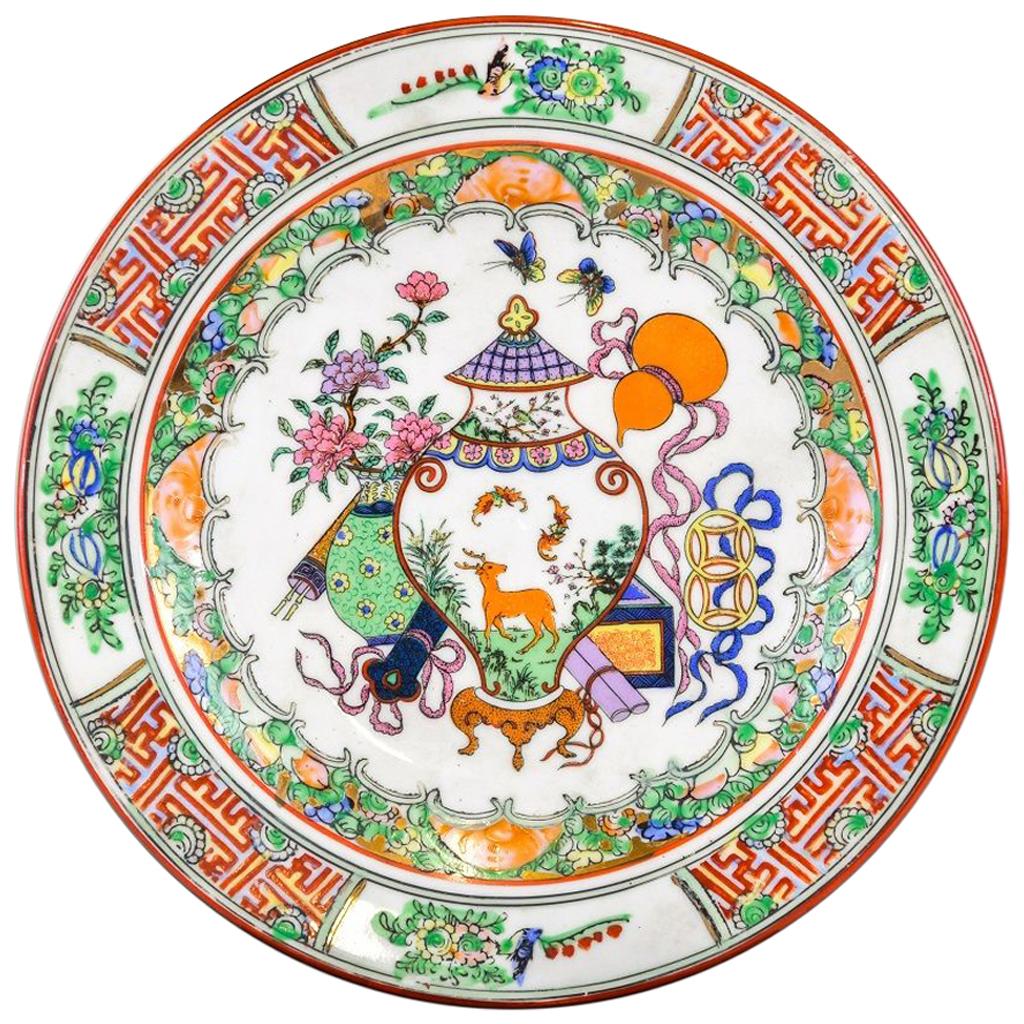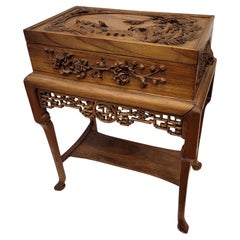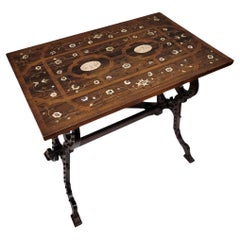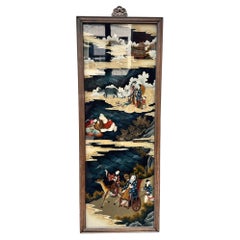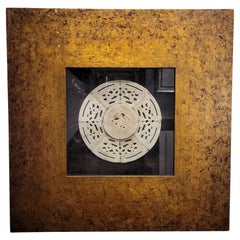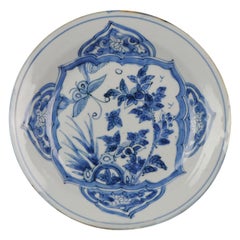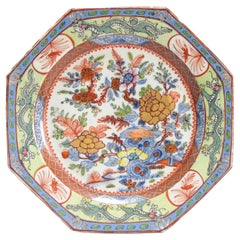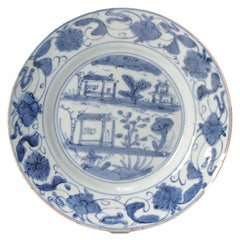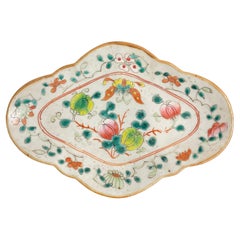Objekte ähnlich wie Chinese Qing porcelain plate, tray, Fitzhugh pattern, British East India Company
Video wird geladen …
Möchten Sie mehr Bilder oder Videos?
Zusätzliche Bilder oder Videos von dem*der Anbieter*in anfordern
1 von 22
Chinese Qing porcelain plate, tray, Fitzhugh pattern, British East India Company
6.002,10 €Einschließlich MwSt.
Angaben zum Objekt
Technical data
Materials: Porcelain tray, wooden legs
Period: Qing Dynasty
Country of origin: China
Good condition for its age and use, with some flaws in the wooden structure
Overall dimensions: 70 x 95 x 80 cm
Porcelain dimensions: 70 x 58 cm
Exquisite Fitzhugh pattern porcelain plate or tray, inlaid in a cabinet that highlights its oval profile and raised on four slightly curved square legs.
The term "Fitzhugh" refers to a type of Chinese export porcelain produced primarily between 1780 and 1840, featuring blue and white designs. It originated with three members of two generations of the Fitzhugh family. Members of this family held important positions as ship captains and even as directors in the British East India Company. Within this company, high-ranking officials were allowed to engage in private trade. Between 1704 and the 1790s, porcelain pieces bearing this pattern were shipped to England.
The design usually includes a central medallion, although it is occasionally replaced by a coat of arms or monogram. The medallion is surrounded by four groupings of flowers representing the four seasons—peony for spring; lotus for summer; chrysanthemum for autumn; and prunus for winter—and symbols that typically represent the four virtues of the Chinese scholar: music, painting, logical thinking, and calligraphy. The design is framed with a decorative border that may be a lattice and spearhead pattern, sometimes known by the term "Nanking," or a more elaborate border featuring butterflies, honeycomb shapes, and floral ornamentation. The definition of the Fitzhugh porcelain group has evolved throughout history in both Europe and America.
In England, authentic Fitzhugh porcelain refers to porcelain that replicates designs associated with William Fitzhugh, a purser in Canton who shipped porcelain to England in 1778, 1789, and 1791. This design consists of a central medallion, four floral clusters, and a trellis-diaper lattice border with a spearhead.
A unique opportunity to acquire a museum-worthy piece!
The British East India Company (1599-1874)
The British East India Company was founded in 1599 by English entrepreneurs to trade with the East Indies, breaking the Dutch monopoly on the spice trade. In 1600, it received a Royal Charter from Queen Elizabeth I granting it a trade monopoly with that region for 15 years. Over time, it transformed into a joint-stock company dominated by wealthy merchants and aristocrats, and although the British government held no shares, it did exercise indirect control. The company eventually handled half of the world's trade, especially in goods such as cotton, tea, silk, opium, and salt.
In 1702, it merged with a rival company and became a major commercial and territorial power in India, with its own army and government functions. Its effective rule in India began in 1757 and ended in 1858, when, following a rebellion, the British Crown took direct control through the Government of India Act. Finally, due to financial problems and political changes, the company was dissolved in 1874, and its functions were absorbed by the British government.
It was primarily established to trade with the East Indies, especially India and China. It traded in products such as spices, tea, silk, cotton, salt, opium, and more. It came to control certain territories in India, acting as a kind of private government, with its own armies, laws, and administrative system, which allowed it to play a key role in the expansion of the British Empire in Asia.
Although its primary function was not artistic, the company had a significant impact on art, mainly indirectly, as it sponsored works of art, encouraged the fusion of European techniques and Eastern styles, and fostered the export of art, textiles, and exotic objects that influenced European fashion and design of the time.
A museum piece!!!
Technical data
Materials: Porcelain tray, wooden legs
Period: Qing Dynasty
Country of origin: China
Good condition for its age and use, with some flaws in the wooden structure
Overall dimensions: 70 x 95 x 80 cm
Porcelain dimensions: 70 x 58 cm
- Schöpfer*in:Margaret Fitzhugh Browne (Künstler*in)
- Maße:Höhe: 70 cm (27,56 in)Breite: 95 cm (37,41 in)Tiefe: 80 cm (31,5 in)
- Stil:Chinesischer Export (Aus dem Zeitalter)
- Materialien und Methoden:
- Herkunftsort:
- Zeitalter:1790–1799
- Herstellungsjahr:1798
- Zustand:Abnutzung dem Alter und der Nutzung entsprechend.
- Anbieterstandort:Valladolid, ES
- Referenznummer:1stDibs: LU2943345387002
Anbieterinformationen
4,7
Gold-Anbieter*in
Premium-Anbieter*innen mit einer Bewertung über 4,3 und 24 Stunden Reaktionszeit
Gründungsjahr 1990
1stDibs-Anbieter*in seit 2017
159 Verkäufe auf 1stDibs
Typische Antwortzeit: <1 Stunde
- VersandAngebot wird abgerufen …Versand von: VALLADOLID, Spanien
- Rückgabebedingungen
Einige Inhalte dieser Seite wurden automatisch übersetzt. Daher kann 1stDibs nicht die Richtigkeit der Übersetzungen garantieren. Englisch ist die Standardsprache dieser Website.
Authentizitätsgarantie
Im unwahrscheinlichen Fall eines Problems mit der Echtheit eines Objekts kontaktieren Sie uns bitte innerhalb von 1 Jahr für eine volle Rückerstattung. DetailsGeld-Zurück-Garantie
Wenn Ihr Objekt nicht der Beschreibung entspricht, beim Transport beschädigt wurde oder nicht ankommt, kontaktieren Sie uns bitte innerhalb von 7 Tagen für eine vollständige Rückerstattung. DetailsStornierung innerhalb von 24 Stunden
Sie können Ihren Kauf jederzeit innerhalb von 24 Stunden stornieren, ohne jegliche Gründe dafür angeben zu müssen.Geprüfte Anbieter*innen
Unsere Anbieter*innen unterliegen strengen Dienstleistungs- und Qualitätsstandards, wodurch wir die Seriosität unserer Angebote gewährleisten können.Preisgarantie
Wenn Sie feststellen, dass ein*e Anbieter*in dasselbe Objekt anderswo zu einem niedrigeren Preis anbietet, werden wir den Preis entsprechend anpassen.Zuverlässige weltweite Lieferung
Unsere erstklassigen Versandunternehmen bieten spezielle Versandoptionen weltweit, einschließlich individueller Lieferung.Mehr von diesem*dieser Anbieter*in
Alle anzeigenQing Dynasty Indochina Seite Brust, , Geschnitztes Holz auf Beinen
Von Paquement Vietnam
Prächtige Beistelltruhe aus der späten Qing-Dynastie in Indochina, frühes 20. Jahrhundert, mit geschnitzter Schürze und Seiten.
Diese Beistelltruhe aus der späten Qing-Dynastie verei...
Kategorie
Antik, Frühes 20. Jhdt., Vietnamesisch, Qing-Dynastie, Schränke
Materialien
Holz
Italienischer Barockhilfstisch oder Buffet Perlmutt, Knochen
Von Italian Sculptor 19 th Century
Wunderschöner Beistelltisch oder Buffet im Barockstil aus dem 19. Jahrhundert in Italien mit einer Platte mit raffinierter Blumenintarsie aus Perlmutt und Knochen auf Edelholz. Wund...
Kategorie
Antik, 1860er, Italienisch, Barock, Ess- und Wohnzimmertische
Materialien
Knochen, Perlmutt, Holz
3.781 € Angebotspreis
20 % Rabatt
Chinesischer Qing-Spiegel mit Umkehrmalerei aus der Qing-Dynastie
Von Chow's Oriental Furniture Co.
Wunderschöner Spiegel mit Hinterglasmalerei aus der Qing-Dynastie des 19. Jahrhunderts, der verschiedene Szenen in einer vertikalen Erzählung darstellt.
Verschiedene Szenen mit symbo...
Kategorie
Antik, 1870er, Chinesisch, Qing-Dynastie, Gemälde, Leinwände und Raumteiler
Materialien
Kristall
Asiatische geschnitzte und gerahmte grüne Bi-Scheibenschleife, Jadeit
Von Chow's Oriental Furniture Co.
Exquisite geschnitzt und gerahmt Jadeit bi Scheibe (璧). Eine Bi-Scheibe ist eine runde (flache) Jadescheibe mit einem Loch in der Mitte, die im alten China verwendet wurde. In diesem...
Kategorie
Vintage, 1940er, Chinesisch, Chinesischer Export, Antiquitäten
Materialien
Kristall, Jade
Spanischer roter Eckschrank aus dem 18. Jahrhundert, Konsole, Andalusianischer Barock
Von Soft Baroque
Herausragendes Werk, das die spanische Barockkunst repräsentiert. Sie hat eine Eckkonsole, die Polychromie ist original erhalten, in venezianischem Rot, das mit Blattgoldverzierungen...
Kategorie
Antik, 1780er, Spanisch, Barock, Konsolentische
Materialien
Blattgold
2.527 € Angebotspreis
53 % Rabatt
Französischer Charles X.-Beistelltisch- Nähkasten aus Holz und Messing mit Intarsien
Wunderschön und sehr raffiniert und eleganter Charles X Nähkasten und blattförmiger Tisch, um 1830 Frankreich. Dieser kleine Beistelltisch ist aus Mahagoniholz gefertigt und mit Go...
Kategorie
Antik, 1830er, Französisch, Charles X., Beistelltische
Materialien
Metall
670 € Angebotspreis
21 % Rabatt
Das könnte Ihnen auch gefallen
Antike chinesische Porzellan Ming Wanli Chinesisch Teller Seltene Dekoration
Ein sehr schön dekorierter Teller mit einer seltenen Größe
14-11-18-1-1
Bedingung
Gesamtzustand a (Gut) mit vielen Randfehlern, wie sie bei dieser Art von Kraak-Porzel...
Kategorie
Antik, 16. Jahrhundert, Chinesisch, Ming-Dynastie, Tonwaren
Materialien
Porzellan
1.440 € Angebotspreis
20 % Rabatt
Antiker chinesischer Porzellanteller aus dem 18. Jahrhundert mit Überdekoration im Regency-Stil
Ein sehr schön gearbeitetes Stück Porzellan aus dem 18. Jahrhundert, das mit einer schönen Szene verziert ist. Unterglasurblaue und überglasierte andere Emaillen wurden später in Eur...
Kategorie
Antik, 18. Jahrhundert, Chinesisch, Regency, Dekoratives Geschirr und Ab...
Materialien
Porzellan
1.349 € Angebotspreis
20 % Rabatt
Antiker chinesischer Ming-/Transitional-Porzellanteller, europäisches Haus, seltenes Stück
Ich habe wirklich etwas Faszinierendes gefunden. Dieser Teller ist mit Häusern verziert, die oft als europäische Häuser angesehen werden. Etwas, das auf Transitional Kraak Tellern un...
Kategorie
Antik, 16. Jahrhundert, Chinesisch, Ming-Dynastie, Tonwaren
Materialien
Porzellan
3.998 € Angebotspreis
20 % Rabatt
Ein chinesischer Wucai-Teller, 19. Jahrhundert
Ein chinesischer Wucai-Teller, 19. Jahrhundert
Wohnkultur, Innenarchitektur und Collectional.
Provenienz: Private Victoria Collection'S.
Dimension:
Höhe: 4 cm
Breite: 20cm
Tiefe: 1...
Kategorie
Antik, 19. Jahrhundert, Chinesisch, Qing-Dynastie, Tonwaren
Materialien
Porzellan
111 € Angebotspreis
50 % Rabatt
Chinesischer Porzellanteller oder Schale mit Qing Kangxi-Marke und Periode, ca. 1700
Dies ist eine wunderschön handbemalte chinesische Export-Porzellan-Teller oder Schüssel aus der Qing, Kangxi-Periode, 1662-1722, vollständig auf den Boden mit der Kangxi-Periode Arte...
Kategorie
Antik, Frühes 18. Jahrhundert, Chinesisch, Chinesischer Export, Tonwaren
Materialien
Porzellan
Klassischer chinesischer Porzellanteller:: hergestellt in China:: Anfang des 20
Dieser Porzellanteller ist ein originelles Dekorationsobjekt, das in China von einer chinesischen Manufaktur zu Beginn des 20. Jahrhunderts hergestellt wurde.
Es ist mit geometri...
Kategorie
Frühes 20. Jahrhundert, Chinesisch, Antiquitäten
Materialien
Keramik
